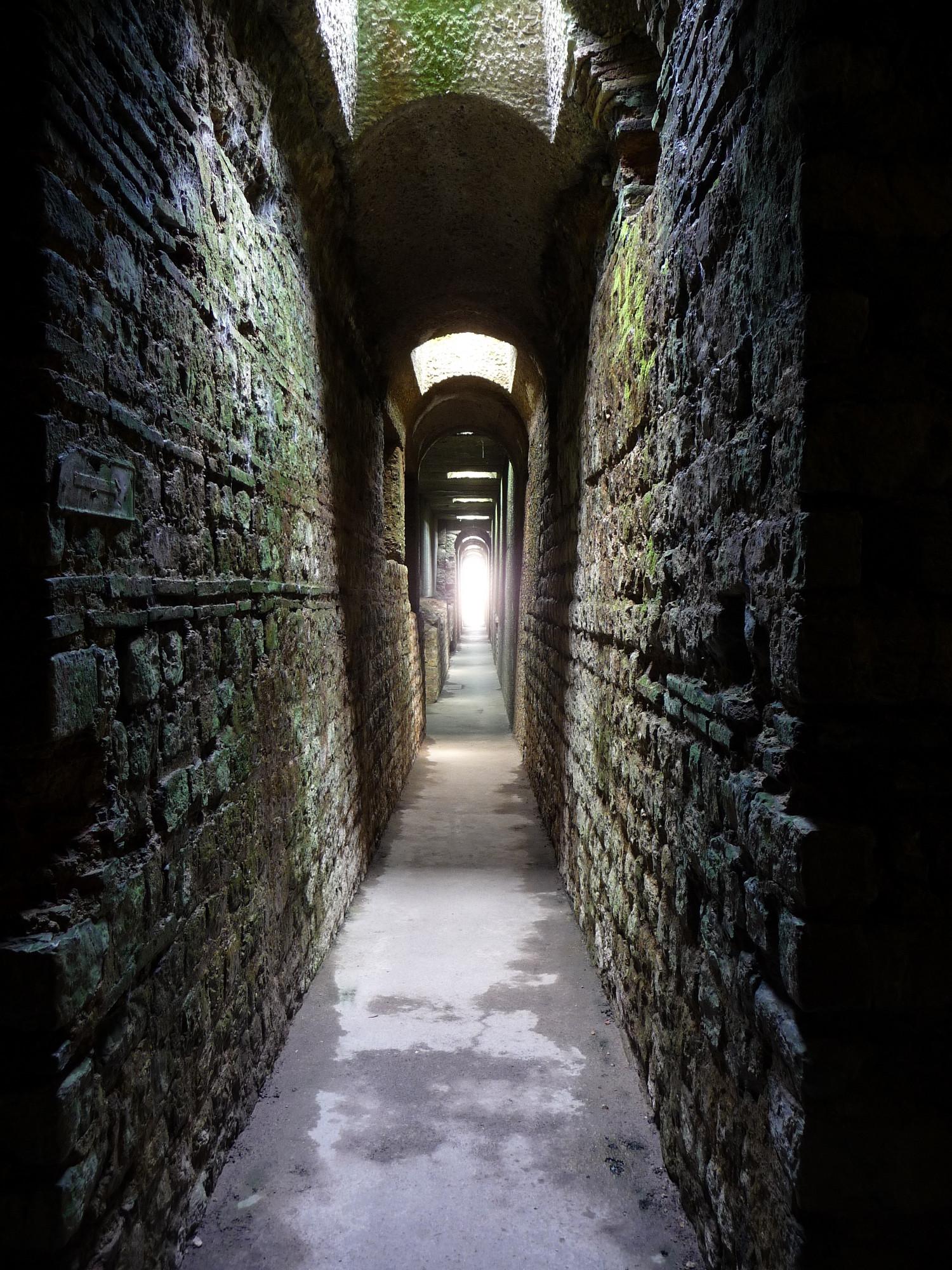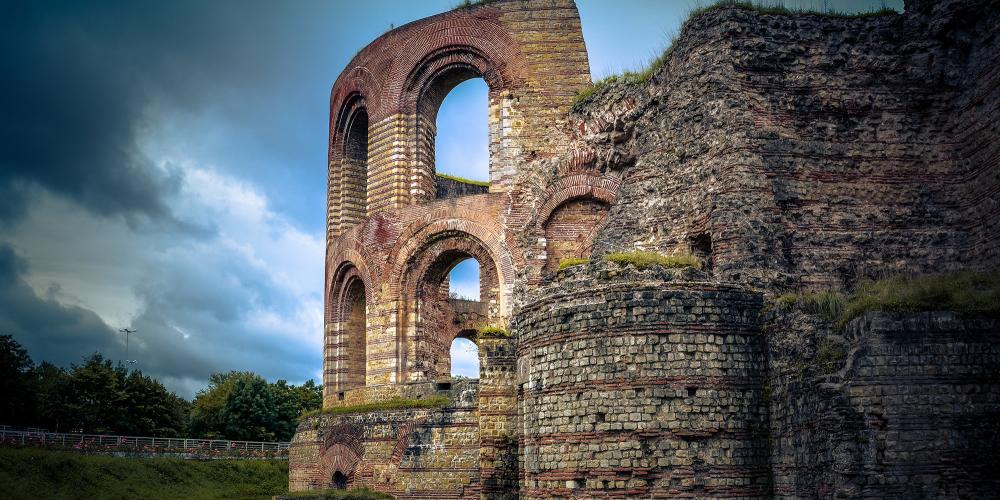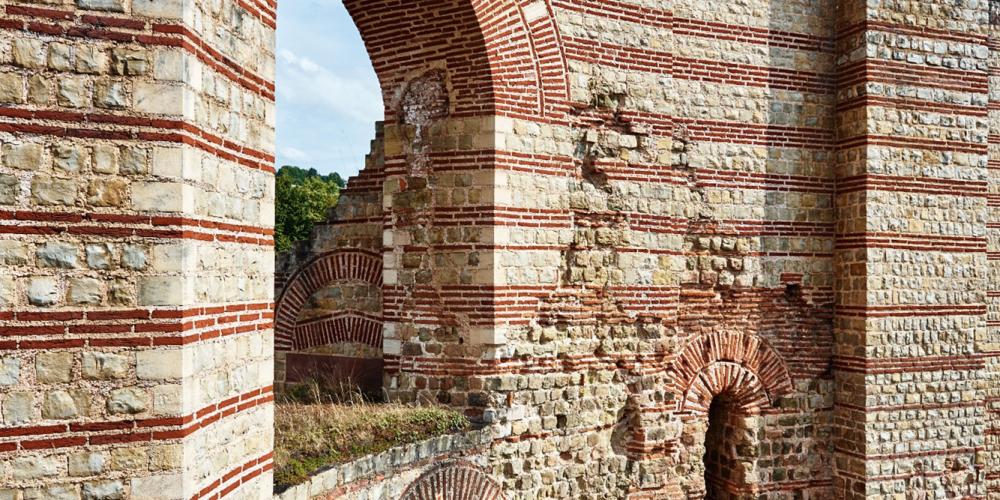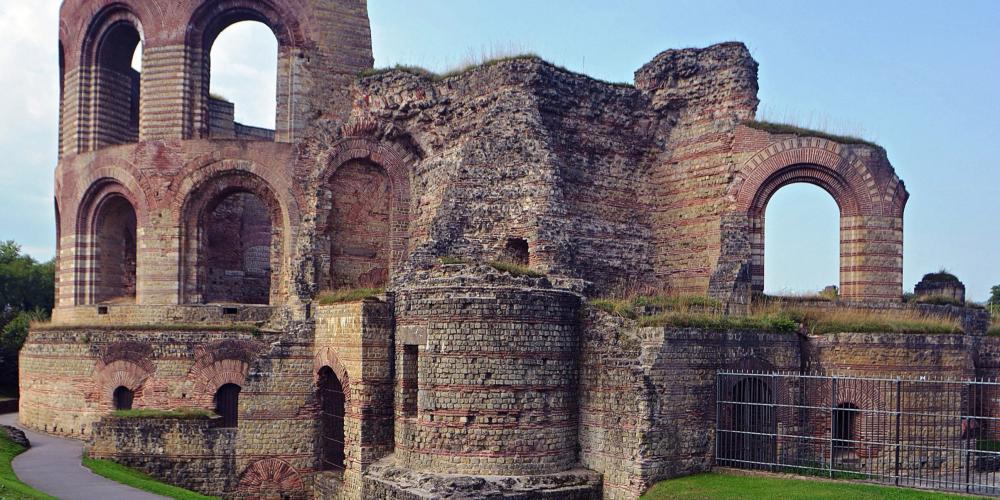Kaiserthermen (Imperial baths)

Trier was already a flourishing trading town when it was elevated to an Imperial residence in Late Antiquity. The construction of the Kaiserthermen, the Imperial baths, thus began in the 3rd century CE and formed part of a major building programme for an Imperial palace district.
The Kaiserthermen were planned as a gift from the Emperor to the population of Trier in the form of public baths. Construction came to a halt in the 3rd century, then the building work on the Kaiserthermen was recommenced in the 4th century CE. At this time there were plans to use the building as barracks, possibly for the mounted Imperial guard.

During later centuries the Kaiserthermen were converted and used as a castle, as a city wall and a monastery. In the 19th century, excavation works started on the remains of the monument, and then in 1984 several windows in the apse were reconstructed. The Kaiserthermen still form part of Trier city centre today. The building's proximity to the palace assembly hall further demonstrates the huge scale of the former palace district. The Kaiserthermen are currently once again undergoing tests, the aim being to determine whether the decorative and technical fittings of the spa were never completed, as is believed.
Kaiserthermen (Imperial baths)
**April - September: **
daily 9:00 - 18:00
**October and March: **
daily 9:00 - 17:00
**November - February: **
daily 9:00 - 16:00
Note: Last admission 30 minutes before closing.
Single admission (price per person):
a) Adults: € 4.00
b) Adults in groups (10 or more persons): € 3.50
c) Children and adolescents through age 17: € 2.50
d) Children and adolescents through age 17 in groups: € 2.00
e) Pensioners, unemployed, students (over age 18), severely disabled, military and civilian service: € 3.00
Single admission (family ticket)
f) Families (1 adult with a maximum of 4 children over age 6): € 4.00
each additional child: € .50
g) Families (2 adults with a maximum of 4 children over age 6): € 8.00
each additional child: € .50
-
Combination tickets:
Antiquity Card Basic
The Antiquity Card Basic includes admission to the Trier Archaeological Museum (Landesmuseum) and two Roman structures. Price: € 12.00 per adult (up to four children under age 18 are included in the ticket price).
-
Antiquity Card Basic for groups (15 or more persons)
The Antiquity Card Basic for groups includes admission to the Trier Archaeological Museum (Landesmuseum) and two Roman structures. Price: € 10.00 per adult (in a group). Price reductions for admission and for tours are not included.
-
Antiquity Card Premium
The Antiquity Card Premium includes admission to the Trier Archaeological Museum (Landesmuseum) and to the four Roman structures Porta Nigra, Imperial Baths, Amphitheater, and Forum Baths. Price: € 18.00 per adult (up to four children under age 18 are included in the ticket price).
-
Antiquity Card School
The Antiquity Card School costs € 6.00 per school student and includes admission to the Trier Archaeological Museum (Landesmuseum), to the four Roman structures Porta Nigra, Imperial Baths, Amphitheater, and Forum Baths.



